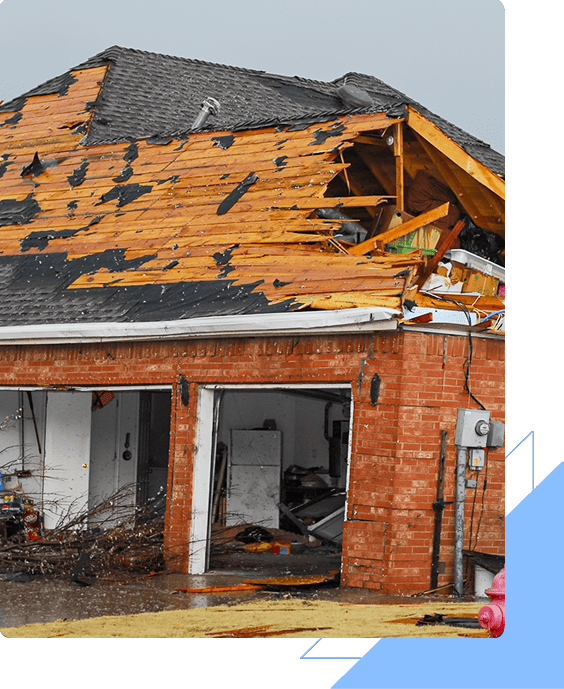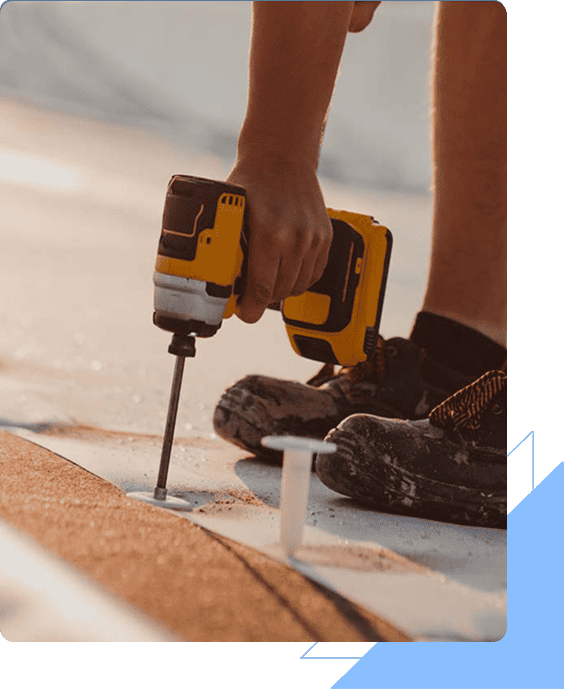When a storm hits, it doesn’t discriminate. It can wreak havoc on your peaceful abode and leave you with mind-boggling damage – physical and emotional.
You’ve worked hard to turn that house into a home, but now you’re faced with the daunting task of filing an insurance claim for storm damage. But don’t worry, we’re here to help you navigate those murky waters.
You might feel overwhelmed at first, thinking about all the paperwork and red tape involved in such claims. We understand that feeling completely! That’s why we’ve compiled these 4 essential tips every homeowner should know when dealing with storm damage insurance claims.
This guide will not just simplify the process for you but also empower you to make informed decisions. After all, your peace of mind is important to us too!
Documenting the Aftermath of the Weather Event
Don’t underestimate the power of a good ‘before and after’ shot; it’s essential to document your property’s condition post-storm, as this will significantly speed up your insurance claim process.
When disaster strikes, it’s easy to feel overwhelmed by the chaos surrounding you. But remember, among all that confusion and devastation lies an opportunity – an opportunity for you to take charge and gather crucial evidence that can play a pivotal role in getting your life back on track.
So grab your camera or smartphone, step outside (if it’s safe), and start clicking those pictures. Capture every angle possible: the shattered windows, the fallen trees, even the waterlogged basement – leave nothing out.
You know what they say about a picture being worth a thousand words? Well, when it comes to insurance claims, this couldn’t be more accurate. By thoroughly documenting the aftermath of the storm using photographs or videos – from wide shots showing extensive damage to close-ups revealing tiny details – you’re essentially providing undeniable proof of what happened.
This visual record could make all the difference between an accepted claim and endless disputes with your insurer. It’s not just about snapping photos though; jot down notes detailing specific damages too! Treat yourself as both a detective investigating a case and a storyteller weaving together events through images and words – because ultimately that’s what you are doing!
The story of how Mother Nature wreaked havoc on your sweet home is one only you can tell best!
Determining the Extent of Home Repairs Needed

Before you can even think about contacting your insurer, it’s vital to get a clear grasp on just how extensive the necessary home repairs might be. This isn’t a time for guesswork or estimations; accuracy is key in this situation. You need to roll up your sleeves and carry out a thorough inspection of your property.
Check every nook and cranny, from the roof down to the basement. Look for visible signs of damage such as broken windows, water leaks, cracked walls, or displaced roofing tiles. It may seem like an enormous task, but remember that knowing exactly what needs fixing will simplify the claim process.
While conducting this inspection, don’t just rely on your observations alone; also consider getting professional help. A licensed contractor or an experienced builder can provide valuable insights into underlying damages you may overlook—issues behind walls or beneath floors that could become serious problems if left unattended. They can give you an accurate repair estimate based on their findings which will be very helpful when negotiating with your insurance company later on.
Remember, knowledge is power and having all the information at hand will ensure you’re not shortchanged during this critical time!
Navigating Policy Coverage and Exclusions
Navigating the labyrinth of policy coverage and exclusions can feel like trying to find your way out of a dense forest without a map. It’s tricky, frustrating, and all-around nerve-wracking. But don’t sweat it! You’re not alone in this.
The first thing you should do is familiarize yourself with what’s covered under your policy and what isn’t. This could include damages from wind, water, hail, or even fallen trees. Just remember that insurance policies are like snowflakes; no two are exactly alike. So don’t assume that because your neighbor was covered for a specific type of damage that you will be too.
Now let’s talk about exclusions – those pesky things that aren’t covered by your insurance policy. These could range from neglect on your part (like not fixing a leaky roof) to ‘acts of God’ such as earthquakes or floods depending on where you live and what kind of policy you have. Don’t get caught off guard by these potential pitfalls.
Take some time to go through your policy carefully, perhaps even with an attorney or insurance professional if needed, to ensure you understand each clause and how it may impact any claims you make after storm damage has occurred at your home sweet home!
Filing the Claim: A Step-by-step Guide
After facing the aftermath of a severe weather event, it’s time to tackle the process of filing the claim – a crucial step that requires precision and patience. Don’t be intimidated; we’re here to hold your hand through this journey.
Start by documenting everything: take pictures and videos of all damages before you even start any clean-up or repairs. It’s essential to have a record that accurately depicts the extent of damage caused by the storm.
Then gather receipts for any valuable items that were damaged – these’ll come in handy when you need to prove their value.
Next up is contacting your insurance company as soon as possible. You’re not alone in this; they’re there to help you navigate this tricky terrain.
When reporting your claim, provide them with all necessary details and be thorough about it – from describing how the incident occurred, listing down damaged items, their values, and providing supporting documents like photos and receipts. Remember though, honesty is key here!
Exaggerating claims can lead to denial or even potential legal implications. And finally, keep track of all communication with your insurer – phone calls, emails, or letters should all be recorded for future reference if needed.
Embrace patience during this process; it might take some time but remember that every step brings you closer to getting back on track.
Communicating with Your Insurance Provider

Feeling overwhelmed? It’s completely normal, but remember, you’re not alone on this journey – your insurance provider is there to lend a helping hand. They’re your ally in navigating the storm damage claim process, so don’t hesitate to reach out to them.
Keep an open line of communication with them and be proactive. Start by informing them about the incident as soon as possible, providing all necessary details – dates, times, and descriptions of what happened. Be clear and concise; it’s their job to understand and assist you.
Make sure that you keep all conversations documented – jot down notes during phone calls or ask for email correspondences when needed. This could serve as proof if any dispute arises in the future.
Remember also to be patient; processing claims can take some time depending upon the severity of the damage and company policy. But stay persistent! Follow up regularly until you get a satisfactory response from your insurance provider.
Building this relationship with your insurer will not only help expedite your current claim but also make future dealings smoother too!
Dealing with Claim Denials and Discrepancies
Despite your best efforts, there might be times when you face claim denials or discrepancies that can really throw you for a loop. It’s like riding a roller coaster without the fun part.
You’ve been through the storm, you’ve documented everything scrupulously, and then bam! A denial letter lands in your mailbox, or you notice that the settlement amount doesn’t quite match up with your estimate. It’s frustratingly normal to feel overwhelmed and even betrayed.
But hang on tight – this isn’t the end of the line. Remember, insurance companies are businesses first and foremost, so don’t take it personally if they seem to push back against your claim initially. Keep calm and carry on as best as you can with a clear mind and steady hand.
Consider hiring a professional public adjuster who specializes in representing policyholders during negotiations with insurance companies; they’re experts at navigating these choppy waters. And above all else, don’t lose hope or sight of your rights as a policyholder – stand firm until you get what is rightfully yours.
Because at the heart of it all, dealing with claim denials and discrepancies is just another test of resilience – one which we know you’re more than capable of overcoming!
Utilizing Professional Help: Public Adjusters and Lawyers
Navigating the complexities of a claim denial or discrepancy can feel like an uphill battle, but remember, you don’t need to go it alone – enlisting the help of public adjusters and lawyers can be a game changer in securing what’s rightfully yours.
These professionals are your secret weapon in navigating the insurance landscape. They understand the ins and outs of insurance policies and claims processes better than anyone else. Their job is to advocate for you, ensure that your claim is represented fairly, and make sure you get what you deserve.
Imagine having someone by your side who knows exactly how to tackle all those tricky policy details and confusing jargon that insurance companies often use to their advantage – now wouldn’t that be quite the relief?
Public adjusters know just how much your property damage is worth; they’ll fight tooth and nail so every penny due comes back home to you.
Lawyers, on the other hand, focus on any legal issues that may arise during this process. From disputing unfair denials to standing up against lowball settlements – they’ve got your back!
So why not let these experienced pros handle all those stressful details while you focus on restoring normalcy after such a stormy ordeal?














